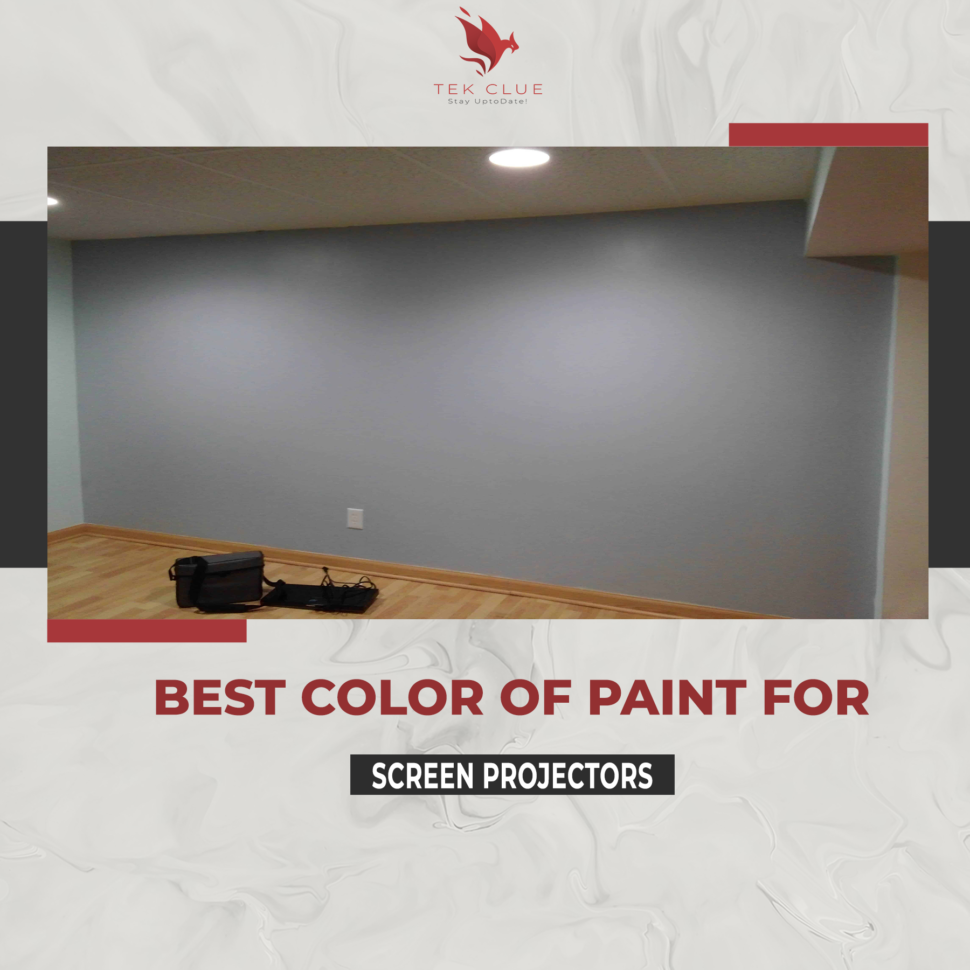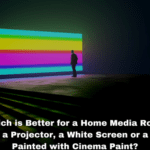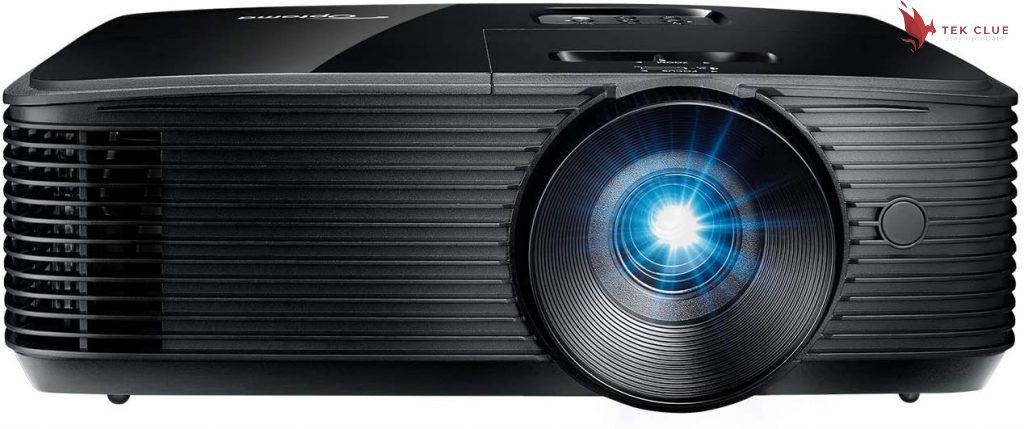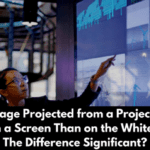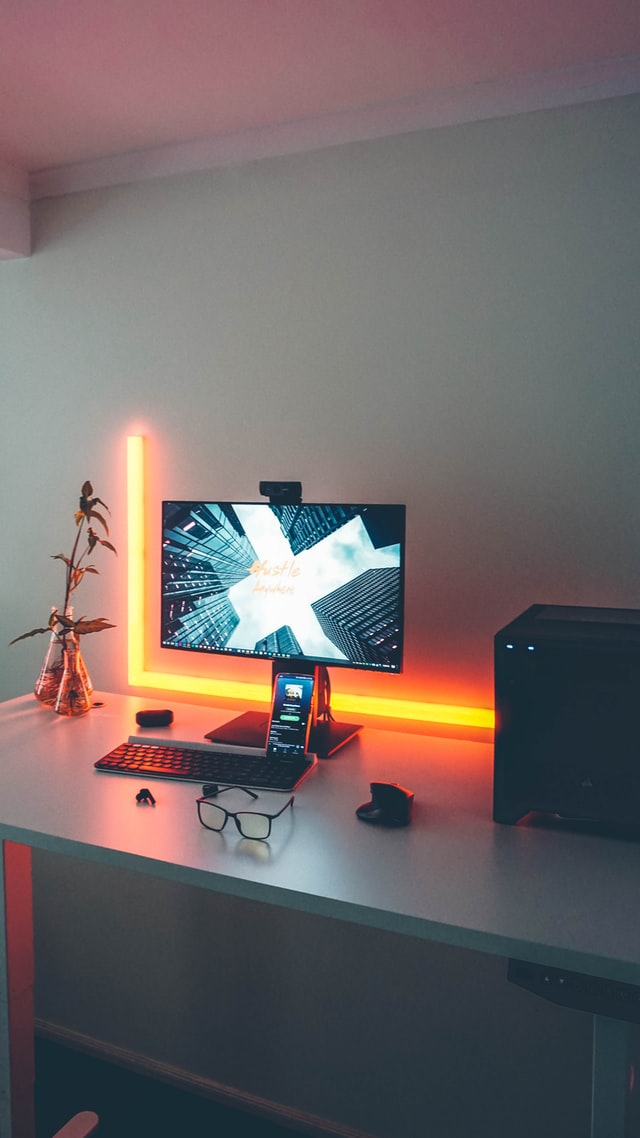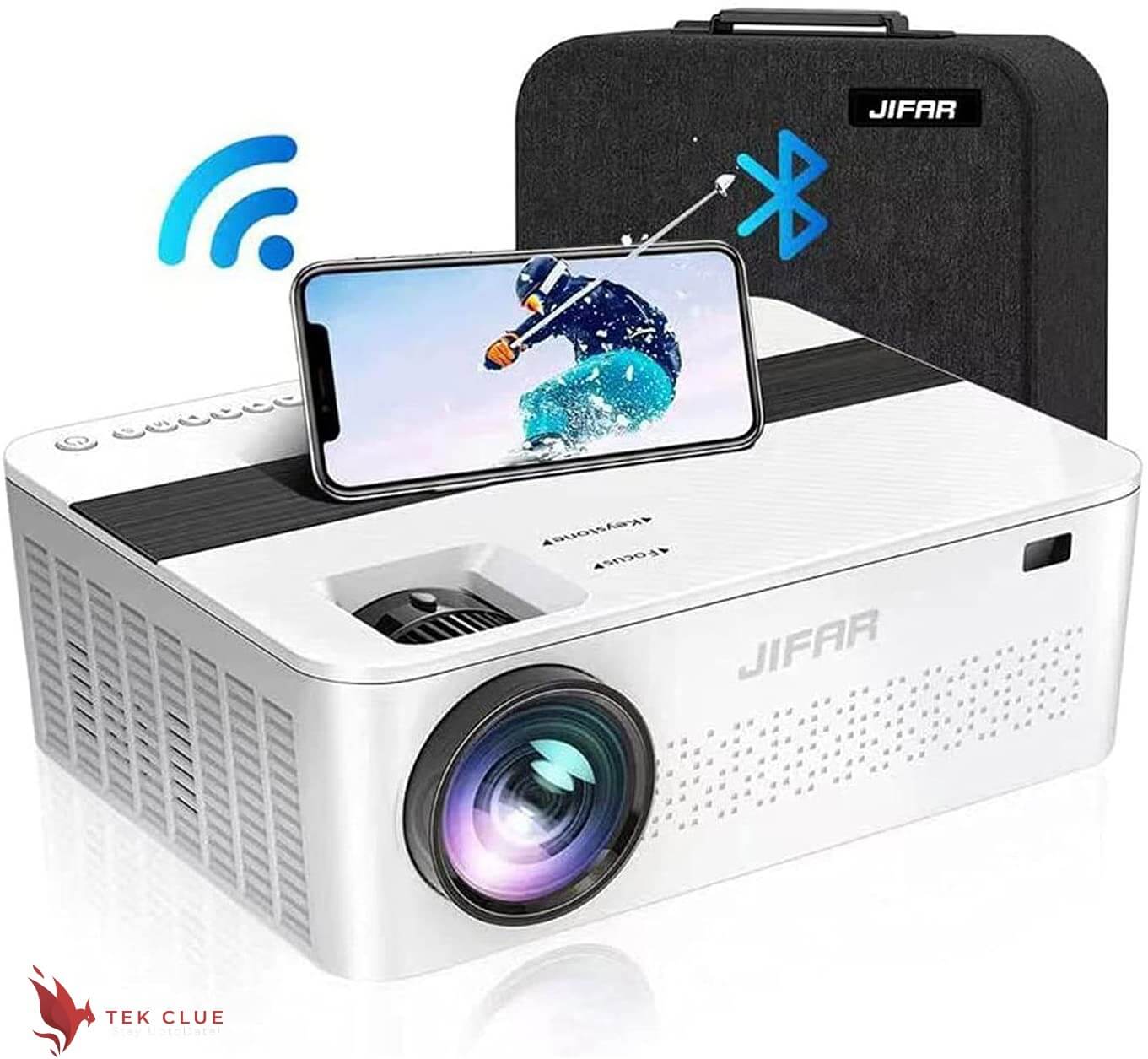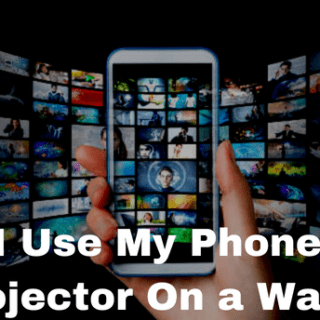You can purchase a particular color for the projector screen to highlight the projector image, add a boost to it and make it brighter even in low-light conditions, or increase contrast to make it clearer or more accurate. There are several approaches open to you. If you plan to repair your home projector screen system, you can start by protecting it on a plain wall. All of the steps involved in painting a screen projector are unique and depend on several factors such as price, efficiency, and persistence.
You may also like: “BEST 1080P PROJECTOR UNDER 500”
Using paint is one of the simplest, cheapest, and most versatile options that many people have used to gain multiple benefits. Are there any advantages of using paint on projector screen? There are some advantages of using projection screen paints. They also allow you to view high-quality videos and other media files on a much larger screen. These benefits, combined with their low cost, make the projector screen wall paint a much superior alternative to a more costly screen. There are numerous paints available on market, but before purchasing one, there are many considerations to consider to purchase a suitable, dependable, and cost-effective product.
Hold on! Before we discuss the best paint for your projection screen there are few things to look out for before you begin your journey.
Select A Right Wall For Cinematic Experience:
Wisely select a wall in your house instead of an old wall. You’ll need to find a wall that’s wide enough to accommodate the size of your screen while still leaving some space around the edges. The selection of walls is a crucial step. Since different input sources will have different image display sizes, you should ensure that the wall can accommodate a variety of displayed images.
Prepare Your Wall For New Paint:
Clean the wall and inspect it for imperfections such as bumps and texture from previous paint jobs. The best way to approach this job is to make the space as dark as possible and use a light aimed along the face of the wall to search for raised areas. To level out bumpy areas of the wall, use soft sandpaper. After the wall has been levelled, clean it with soapy water or a mild detergent to remove dust particles.
Apply White Primer:
Now that the wall is smooth and ready, apply a layer of white primer to allow you to begin with an even color layer. Your projector paint will mirror the light image back at you, and irregular color will result in blurred image reflection.
Time to Apply Paint:
Now since the wall is clean and ready, apply a layer of white primer so you can begin with an even color layer. The paint on your projector will mirror the light image back to you, and imperfect color will result in blurred image reflection. With the right wall and the best paint, you can start building a home theater that can compete with your nearby cinema. Never fail to consider your projector’s capabilities and take your time choosing your color.
Best Projector Screen Paint:
White Paint
(Cheaper and better video display)
First and foremost, a white screen can display more light than a black or gray screen. A gray projector screen is not a good option if your projector is unable of generating bright enough light. For such projectors, you would need a white projector screen with a high gain to reflect enough light so that the image does not appear dull or washed out. White is a common screen paint color because it is clear and has a positive effect. Since there are more products available for white screens than for gray screens, more manufacturers are producing them. Keep in mind that an off-white or matte paint is also considered to be in the white color category.
What benefits does white paint offer on projector screens? Painting a wall or repainting an existing panel with white paint guarantees that the video is displayed accurately on-screen. Because of their color quality and bright whites when the video is projected onto the wall, they continue to be the current screen color standard. When applied they work well on PVC material because it provides an enchanting effect. Furthermore, as opposed to other shades, this color preference provides the most expansive viewing angles. However, black levels have a weaker effect on white.
Gray Paint
(High Contrast Screen)
LCD projectors from the 1960s to the early 2000s had problems with both ambient light and preserving black levels in areas where the illumination wasn’t pitch-black. Gray projector screens became more popular during this period to allow for high-contrast viewing even in low-light conditions. The gray paint for the projector screen is a light-absorbing screen color that is used to improve picture clarity by increasing black levels or contrast. When it comes to black stages, gray screens outperform white screens. What purpose does gray paint serve? Gray displays are also known as high contrast screens because they are used to increase contrast on digital projectors in non-completely dark viewing rooms. A gray screen absorbs ambient light more effectively than a white screen.
Gray displays have been made obsolete by today’s high contrast DLP projectors. This is not the case. High contrast projectors should indeed be used with white screens when used in a completely darkened setting. If you are confused that which paint will offer you more advantage, then that depends on the display room’s latent contrast value. Under which conditions gray paint would be a great choice? Projection systems are often used in living spaces, multi-purpose entertainment rooms, and family rooms with light-colored walls, floors, drapes, and so on. In this case, a gray screen would be more effective at destroying the incident light and preserving deeper black levels on the screen.
Silver Paint
(Best choice for best contrast on screen)
Apart from gray displays, which are primarily concerned with brightness and contrast, silver screens make whites and contrast prominently on the screen with the vibrancy of black and white photography. This is especially true for colored films, where the quality of the content is sufficient to make even Technicolor technology appear vivid for its time. Silver combines the color consistency of white with the high contrast of dark, providing greater clarity and detail perception of blacks and whites as well as all other colors in the spectrum.
Is the silver screen still used today? As technology advances, the film industry seems to have abandoned the silver screen in favor of the white or gray screen. However, silver is making a comeback as a common projector screen material due to the availability of emulsions or surfaces that replicate silver properties while still providing adequate light absorption to prevent hot-spotting. A useful tip that is beneficial for the silver screen is to stop the silver screen from hot-spotting, look for an emulsion or surface that has silver properties as well as the excellent absorption you’d expect from a normal white screen.
Conclusion
The color of the screen paint you buy for your projector screen wall will be heavily influenced by the amount of ambient lighting in the room. In a space with a lot of ambient light coming in through windows or doors, you’ll need white-colored reflective paint to ensure that enough light is reflected from the projector screen surface. However, if you have a light-controlled room that is relatively dim, you can choose gray, which is less reflective. A less reflective surface has the advantage of allowing fewer light reflections from the walls and ceilings. This will make the space darker when watching a movie, providing a more immersive cinematic experience.
Because of their sheer reflective properties, silver screens have the best features for reflecting even low-light projections. However, it can become very costly. White is more commonly used because it is less expensive and because it is a neutral color that better captures the fidelity of the projected image.
Related Articles:
What Chairs Do Pro Gamers Use?
Epson Projector Not Displaying Computer Screen Mac
Does Mobile Data Drain Battery More Than WiFi?

